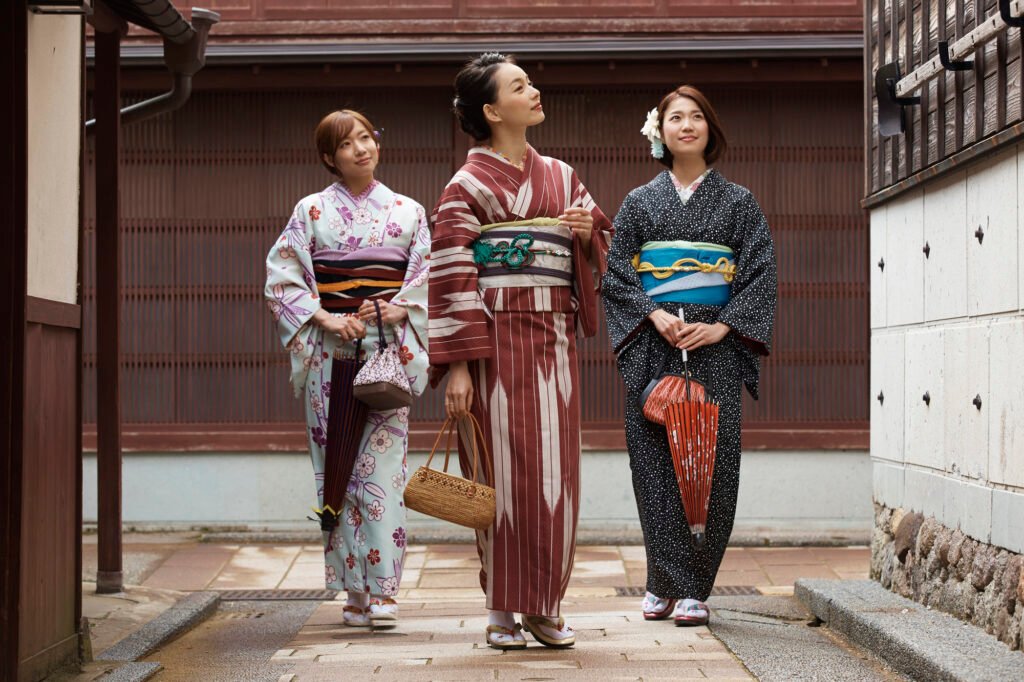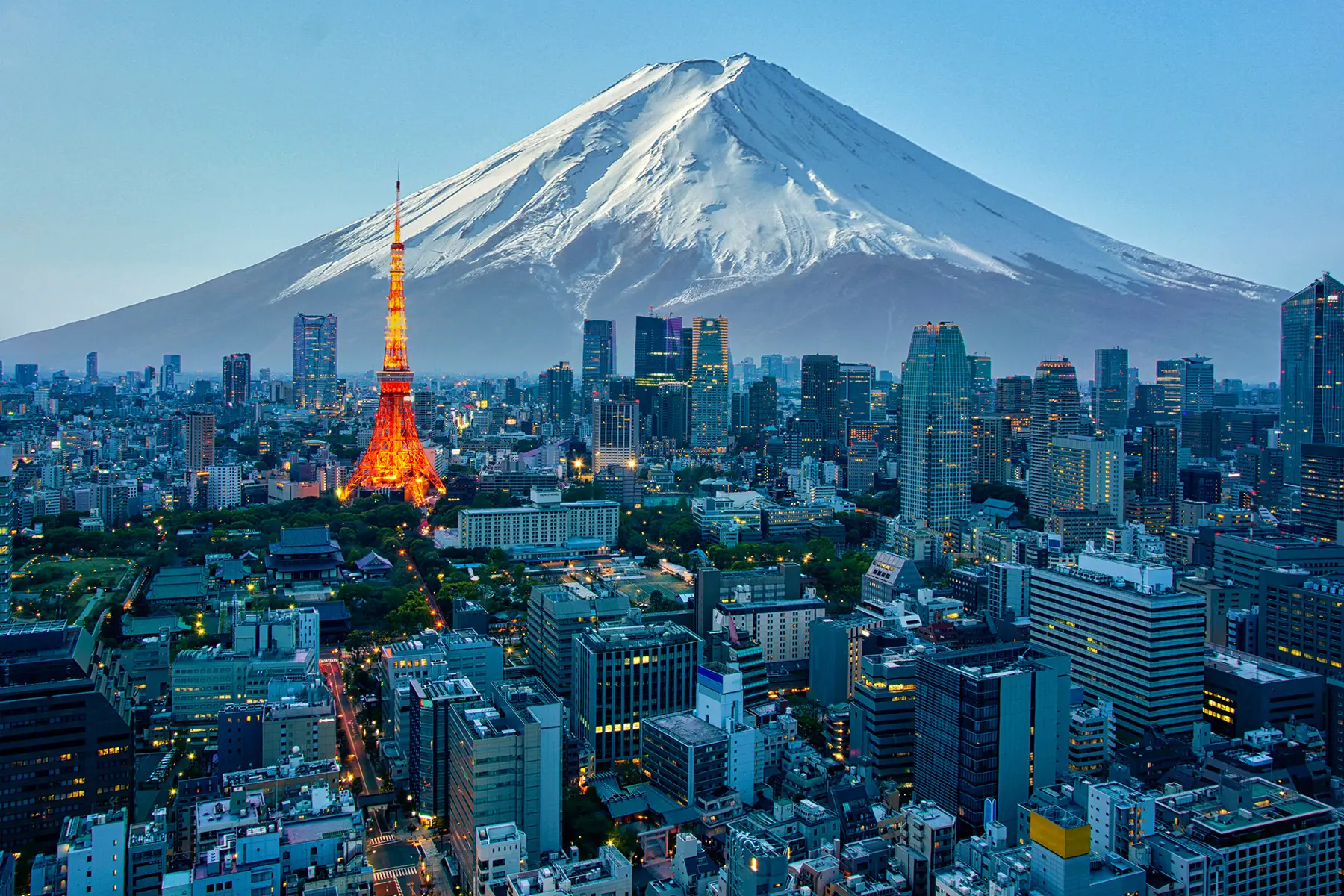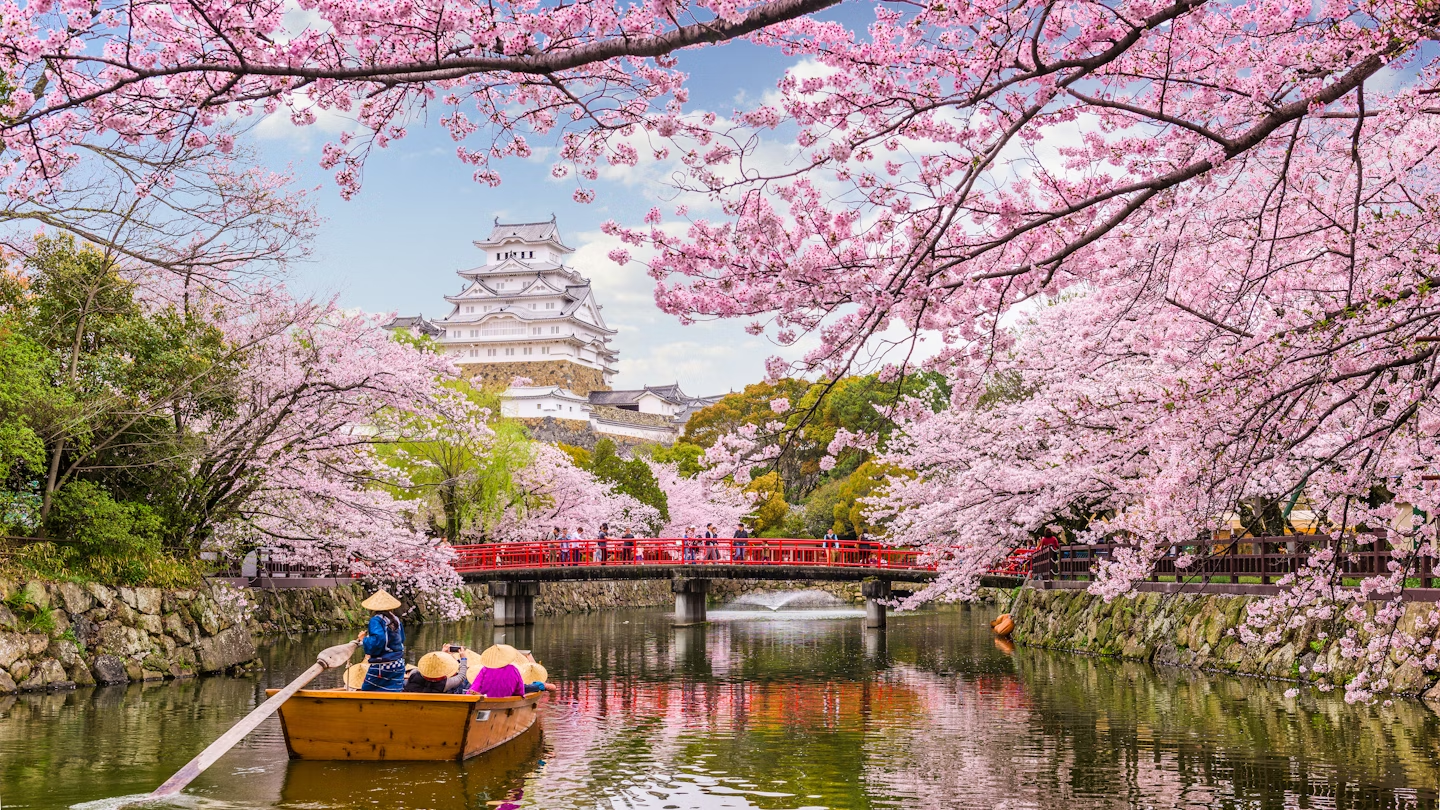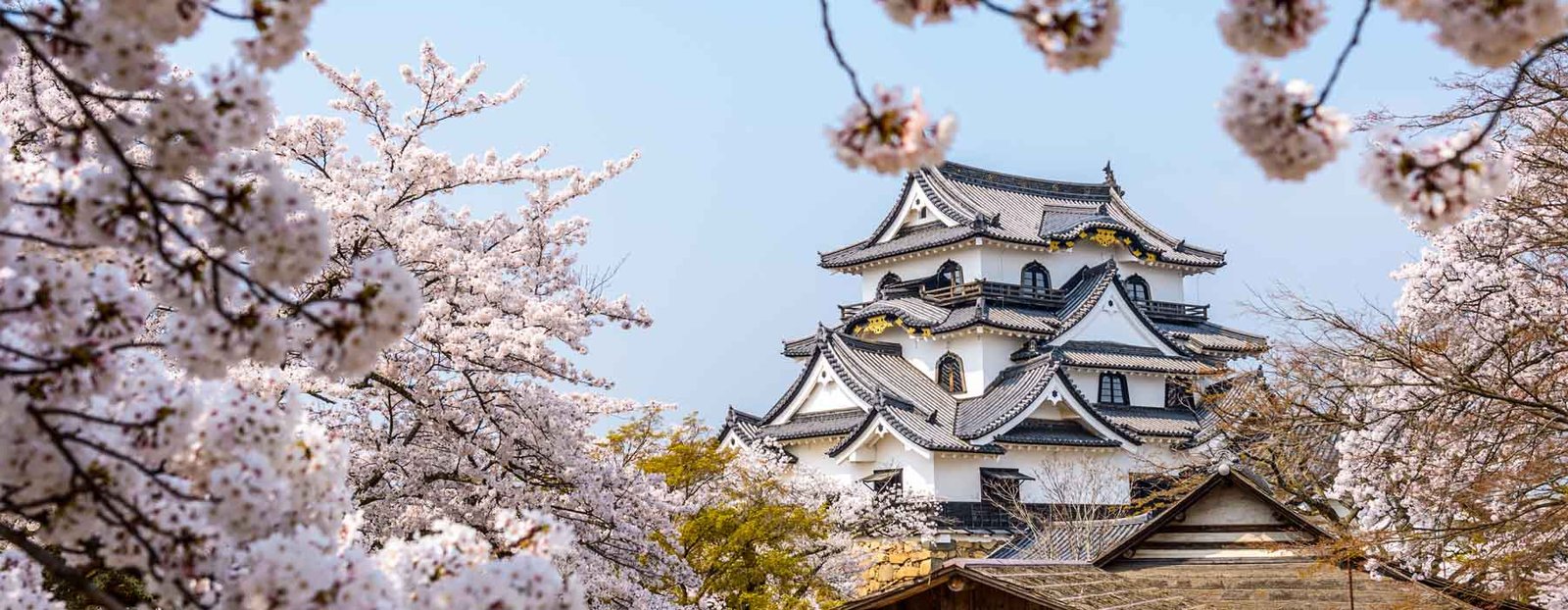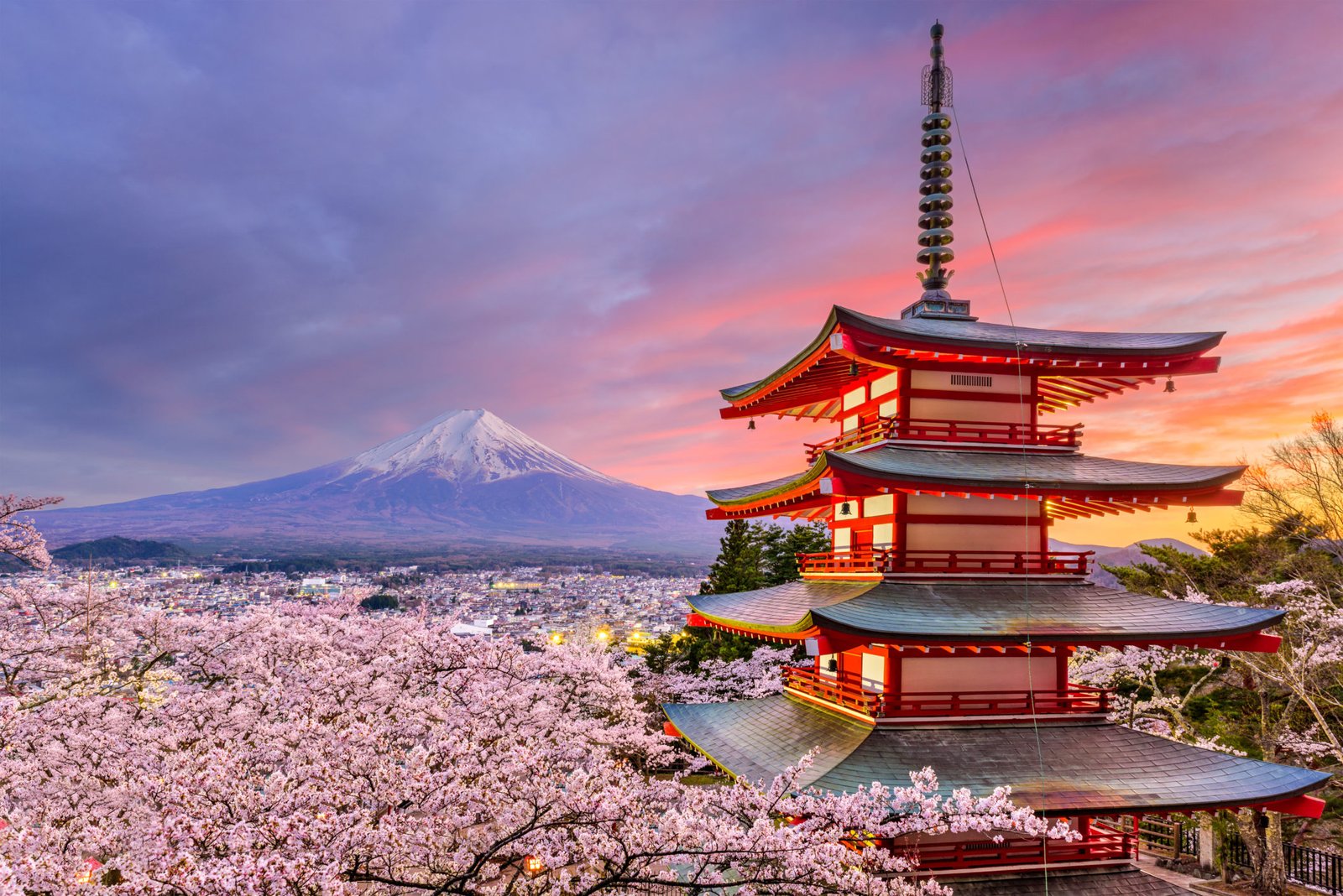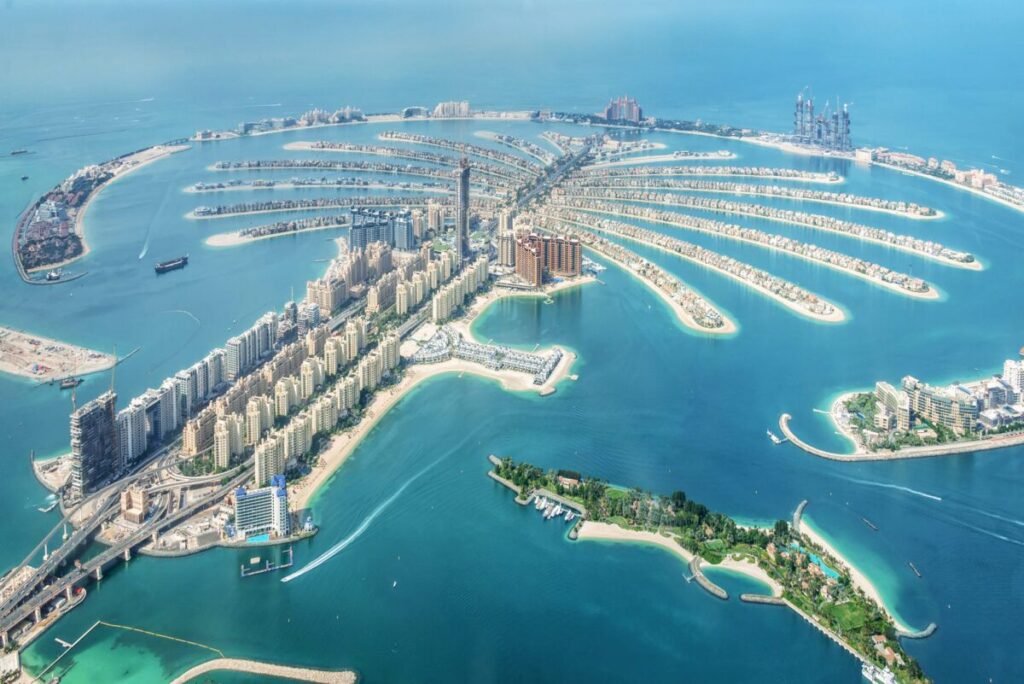Introduction:
Japan, an island nation in East Asia, is located in the northwest Pacific Ocean. It comprises four main islands—Honshu, Hokkaido, Kyushu, and Shikoku—along with numerous smaller islands. The capital city is Tokyo, which is also the largest city in Japan and one of the most populous metropolitan areas in the world.
Japan is known for its stunning landscapes that range from majestic mountains and active volcanoes to serene gardens and bustling cities. The climate varies from north to south, with cold winters in Hokkaido and subtropical conditions in Okinawa. The country’s geographical location and unique climate contribute to its rich biodiversity.
Economically, Japan is one of the world’s most developed countries, with a highly advanced industrial and technological sector. It is the third-largest economy globally by nominal GDP. The Japanese yen (JPY) is the official currency, and the country is known for its automotive, electronics, and robotics industries.
Culturally, Japan is a blend of ancient traditions and modern innovation. The country is renowned for its art, cuisine, festivals, and technology. Japanese culture has a profound impact globally, with practices like tea ceremonies, sumo wrestling, and anime becoming worldwide phenomena. The Japanese language, along with its writing systems—Kanji, Hiragana, and Katakana—plays a significant role in cultural expression.
Japan’s history is marked by periods of isolation and rapid modernization. From the ancient samurai and shogunate era to the Meiji Restoration and its rise as an economic powerhouse after World War II, Japan’s history is rich and complex.
Politically, Japan is a constitutional monarchy with a parliamentary government. The Emperor is the ceremonial head of state, while the Prime Minister is the head of government. Japan is a member of several international organizations, including the United Nations, G7, and APEC.
Tourism in Japan is a major industry, with millions of visitors each year attracted to its historical sites, natural beauty, and cultural experiences. Popular destinations include Tokyo, Kyoto, Hiroshima, and Mount Fuji. Japan’s efficient transportation network, including the famous Shinkansen (bullet trains), makes traveling around the country convenient.
110 Facts About Japan (2024)
Basic Information
| Number | Category | Details |
|---|---|---|
| 1. | Current Name | Japan |
| 2. | National Name | 日本国 (Nippon-koku / Nihon-koku) |
| 3. | Former Names | N/A |
| 4. | Date of Establishment | February 11, 660 BCE (traditional founding date) |
| 5. | Date of Independence | N/A (never colonized) |
| 6. | Leadership | Prime Minister: Fumio Kishida |
| 7. | Government Type | Constitutional monarchy with a parliamentary government |
Geography
| Number | Category | Details |
|---|---|---|
| 8. | Capital City | Tokyo |
| 9. | Important Cities | Osaka, Kyoto, Yokohama, Nagoya, Sapporo |
| 10. | Land Area | 377,975 square kilometers |
| 11. | Total Area | 377,975 square kilometers |
| 12. | Neighboring Countries (Land) | None |
| 13. | Neighboring Countries (Sea) | China, South Korea, Russia, Taiwan |
| 14. | UNESCO World Heritage Sites | Historic Monuments of Ancient Kyoto, Shirakami-Sanchi, Himeji Castle (23 sites) |
| 15. | UNESCO World Natural Sites | Yakushima, Shiretoko, Ogasawara Islands (4 sites) |
| 16. | Climate | Varies from tropical in the south to cool temperate in the north |
| 17. | Biodiversity | Diverse species including the Japanese macaque, Japanese crane, and sika deer |
| 18. | Famous River | Shinano River |
| 19. | Famous Mountain | Mount Fuji |
| 20. | Coastline Length | 29,751 kilometers |
| 21. | Major Islands | Honshu, Hokkaido, Kyushu, Shikoku |
| 22. | Longest River | Shinano River |
| 23. | Highest Waterfall | Hannoki Falls |
| 24. | Largest Lake | Lake Biwa |
| 25. | Largest Forest | Chichibu-Tama-Kai National Park |
Population
| Number | Category | Details |
|---|---|---|
| 26. | Population (2024) | Approximately 125 million |
| 27. | Population (1950) | 83 million |
| 28. | Population (1900) | 43 million |
| 29. | Projected Population (2070) | 100 million |
| 30. | Population Density | 331 people per square kilometer |
| 31. | Urban Population (%) | 91% |
| 32. | Rural Population (%) | 9% |
Demographics
| Number | Category | Details |
|---|---|---|
| 33. | Ethnicity/Race | Japanese (98.1%), Other (1.9%) |
| 34. | Languages | Japanese (official) |
| 35. | National Language | Japanese |
| 36. | Religion | Shinto (70%), Buddhism (69%), Christianity (1.5%), Other (7%) |
| 37. | Median Age | 48.4 years |
| 38. | Life Expectancy | 84.7 years |
| 39. | Birth Rate | 7.2 births per 1,000 people |
| 40. | Death Rate | 11.1 deaths per 1,000 people |
Economic Indicators
| Number | Category | Details |
|---|---|---|
| 41. | Monetary Unit | Japanese Yen (JPY) |
| 42. | GDP | $5.15 trillion (2022 est.) |
| 43. | GDP per Capita (PPP) | $42,940 (2022 est.) |
| 44. | Income Level | High income |
| 45. | Consumer Price Inflation | 0.9% (2022 est.) |
| 46. | Current Account Balance | $146 billion surplus (2022 est.) |
| 47. | Exchange Rate (Per $) | 1 USD = 109.5 JPY |
| 48. | Unemployment Rate | 2.8% (2022 est.) |
| 49. | Stocks Inward ($ billion) | 1,600 (2022 est.) |
| 50. | Real GDP Growth (%) | 2.0% (2022 est.) |
| 51. | Labor Force (Million) | 68 million |
| 52. | Major Industries | Automotive, electronics, robotics, biotechnology, chemicals |
| 53. | Major Exports | Motor vehicles, semiconductors, iron and steel products, auto parts, plastic materials |
| 54. | Major Imports | Petroleum, liquid natural gas, clothing, semiconductors, machinery |
| 55. | Public Debt (% of GDP) | 238% (2022 est.) |
| 56. | Tax Revenue (% of GDP) | 31.4% (2022 est.) |
| 57. | Minimum Wage | 930 JPY per hour |
| 58. | Average Household Income | $47,000 per |
year |
| 59. | Inflation Rate | 0.9% (2022) |
| 60. | Interest Rate | -0.1% (2022) |
| 61. | Major Trade Partners | China, United States, South Korea, Taiwan, Thailand |
Social Indicators
| Number | Category | Details |
|---|---|---|
| 62. | Literacy Rate | 99% |
| 63. | Fertility Rate | 1.36 children per woman |
| 64. | Infant Mortality Rate | 1.8 per 1,000 live births |
| 65. | Under-5 Mortality Rate | 2.7 per 1,000 live births |
| 66. | National Holidays | New Year’s Day, Showa Day, Constitution Memorial Day, Children’s Day |
| 67. | Health Care System | Universal healthcare system |
| 68. | Health Expenditure (% of GDP) | 10.9% (2022 est.) |
| 69. | Obesity Rate | 4.3% of adults |
| 70. | Drinking Water Source | 100% of the population has access to clean drinking water |
| 71. | Access to Sanitation | 100% of the population has access to improved sanitation facilities |
| 72. | Average Life Satisfaction | 5.9/10 |
| 73. | Major Health Issues | Cardiovascular diseases, cancer, diabetes |
| 74. | Smoking Rate | 17.7% of adults |
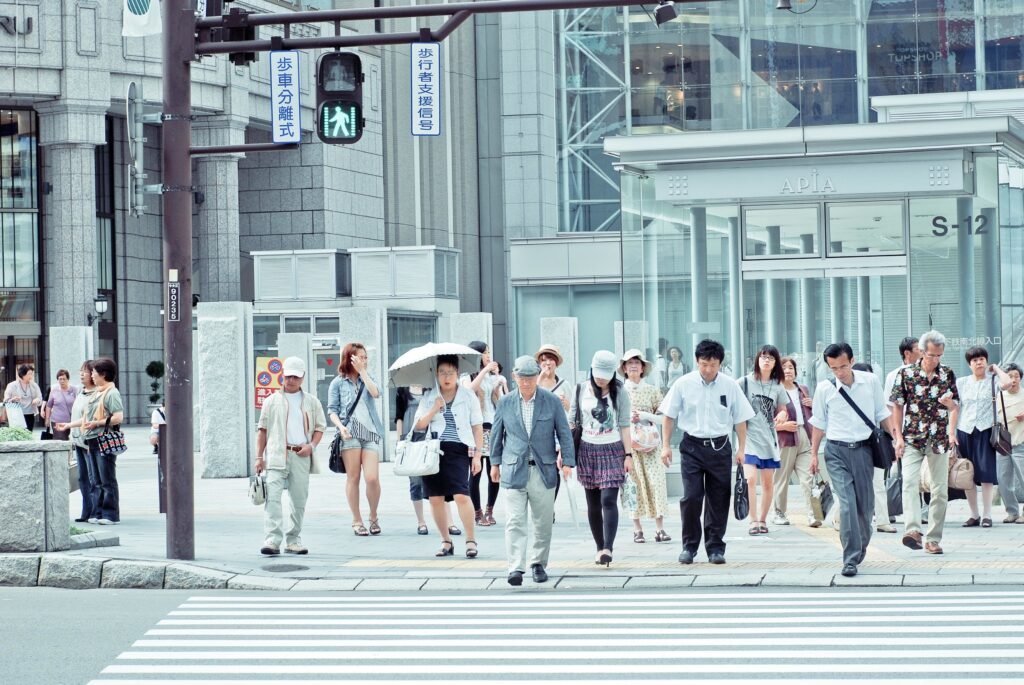
Culture and Society
| Number | Category | Details |
|---|---|---|
| 75. | Famous People | Hayao Miyazaki, Haruki Murakami, Akira Kurosawa, Emperor Naruhito |
| 76. | Legal Marriage Age | 18 years |
| 77. | Gender Inequality Index | 0.118 (2021) |
| 78. | National Sport | Sumo wrestling |
| 79. | Sport Achievements | Multiple Olympic medals, World Cup victories in women’s soccer |
| 80. | National Animal | Japanese macaque |
| 81. | National Fruit | Persimmon |
| 82. | Famous Landmarks | Tokyo Tower, Fushimi Inari Shrine, Kiyomizu-dera |
| 83. | National Dish | Sushi |
| 84. | Major Newspapers | The Yomiuri Shimbun, The Asahi Shimbun, The Mainichi Shimbun |
| 85. | Major TV Channels | NHK, Fuji TV, Nippon TV |
| 86. | Popular Music Genres | J-pop, enka, rock, classical |
| 87. | National Theatre | Kabuki-za, Tokyo |
| 88. | National Gallery | Tokyo National Museum |
| 89. | Popular Festivals | Gion Matsuri, Awa Odori, Sapporo Snow Festival |
| 90. | Average Internet Speed | 29 Mbps |
| 91. | Most Popular TV Show | Attack on Titan |
| 92. | Most Popular Book | Norwegian Wood by Haruki Murakami |
| 93. | Most Popular Sport | Baseball |
| 94. | Most Visited Museum | Tokyo National Museum |
| 95. | Largest Stadium | Nissan Stadium |
| 96. | National Anthem | Kimigayo |
| 97. | Famous Historical Sites | Hiroshima Peace Memorial, Himeji Castle, Nijo Castle |
| 98. | Major Brands | Toyota, Sony, Panasonic, Nintendo |
| 99. | Famous Foods | Sushi, ramen, tempura, miso soup |
| 100. | Famous Drinks | Sake, green tea, Asahi beer |
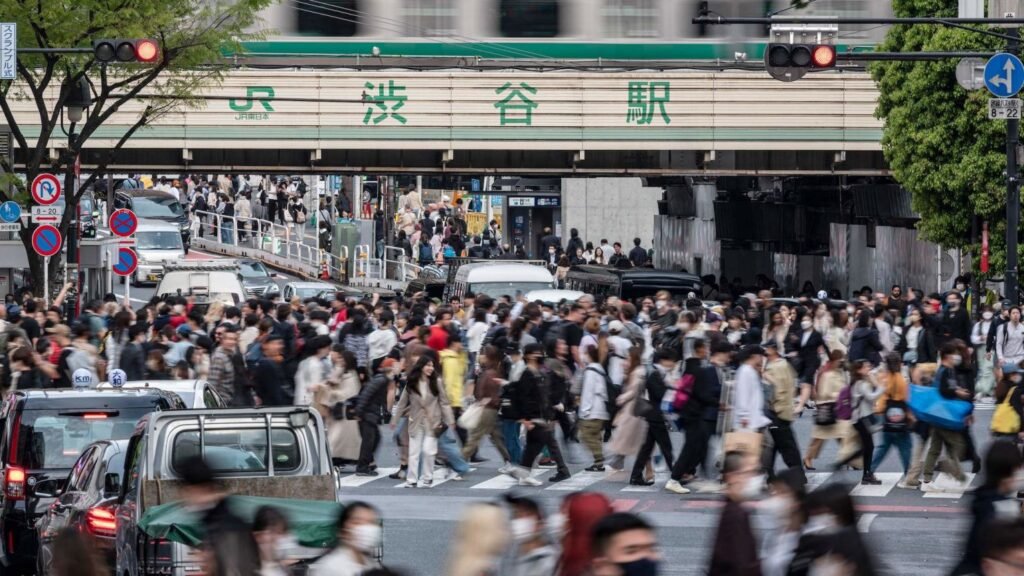
Education
| Number | Category | Details |
|---|---|---|
| 101. | Best Public University | University of Tokyo |
| 102. | Best Private University | Keio University |
| 103. | Education Rank | 11th globally |
| 104. | School Enrollment Rate | 99% for primary education |
| 105. | Average Class Size | 28 students |
| 106. | Notable Alumni | Shinzo Abe, Haruki Murakami, Akira Kurosawa |
| 107. | Public Spending on Education | 3.5% of GDP |
| 108. | Number of Universities | Over 700 |
| 109. | Popular Study Abroad Destinations | United States, United Kingdom, Australia |
| 110. | Literacy Programs | Extensive adult literacy programs available |
History
Japan’s history is marked by periods of isolation and rapid modernization. From the ancient samurai and shogunate era to the Meiji Restoration and its rise as an economic powerhouse after World War II, Japan’s history is rich and complex.
The Flag of Japan
The national flag of Japan, known as the Nisshōki or Hinomaru, features a red circle, symbolizing the sun, centered on a white field.
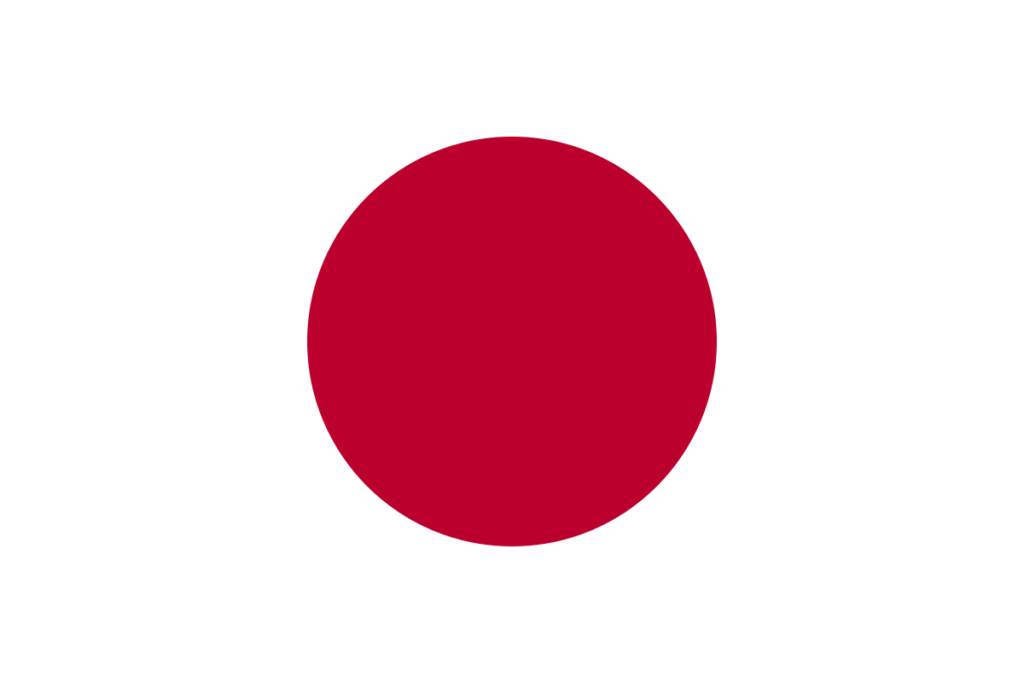
- Red Circle: Represents the sun, which has significant cultural and historical importance in Japan.
- White Field: Symbolizes purity and honesty.
The flag symbolizes Japan’s cultural identity and its reverence for the sun, reflecting its nickname, “Land of the Rising Sun.”
